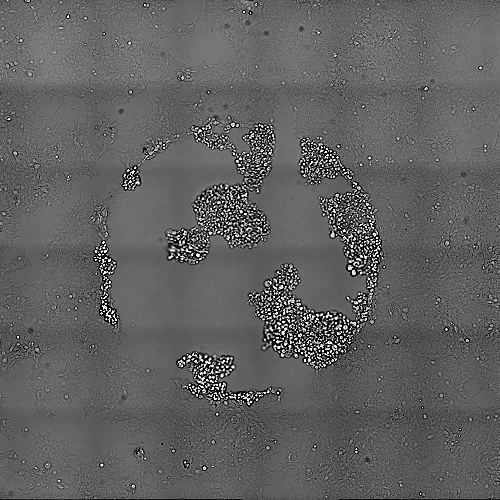...
These are cells exposed to 1 second of 561nm light every 5 minutes. The total movie is about 3h. The cells retract, detach and eventually die.
This is another example of cells exposed to 1 second of 405nm and 1s of 561nm light every 5 minutes. The total duration is about 8h.
If you step back then you can see that the damaged are actually limited to the exposed area
What are the important factors when talking about phototoxicityphoto-toxicity?
The amount of light, the wavelength, the surface illuminated, the duration of illumination, the repetition of the illumination.
...
The wavelength: The energy carried by laser light is dependant of the wavelength. Shorter wavelength have more energy and are more deleterousdeleterious
The area illuminated: Shining the same amount of light into a small area result in stronger damage
...
Empirically you can determine if phototoxicity if photo-toxicity occur by looking at your cells. IF your cells are not dividing, if they detach then you may have phototoxicityphoto-toxicity.
It is always good to acquire a larger field of view of the recorded area to make sure no phototoxicity no photo-toxicity has occurred.
With a power meter you can also evaluate the amount of energy that your cells are confortable with.
...
Finding the irradiance that is stress free or your cells is key. To do this you can shine continuously a defined irradiance and observe your cells for several hours. If your cells do not display any sign of phototoxicity of photo-toxicity you can increase the irradiance and continue until finding the maximum acceptable continuous irradiance.
...
Obviously there is some flexibility since you will likely not continuously expose your cells. So you may pass above the maximum acceptable continuous irradiance value, which will stress your cells but eventually they will recover. Only you can determine if this amount of stress is experimentally acceptable and not modify the biology of what you want to measure.
Here is another suddle discrete example.
Cells were imaged for 100ms with 561nm light every 5 minutes. Cells are dividing faster than the effect of phototoxicity photo-toxicity that is occuringoccurring. Again here the best way to control is to take an overview image at the end of the acquisition and compare exposed cells to non-exposed cells.



